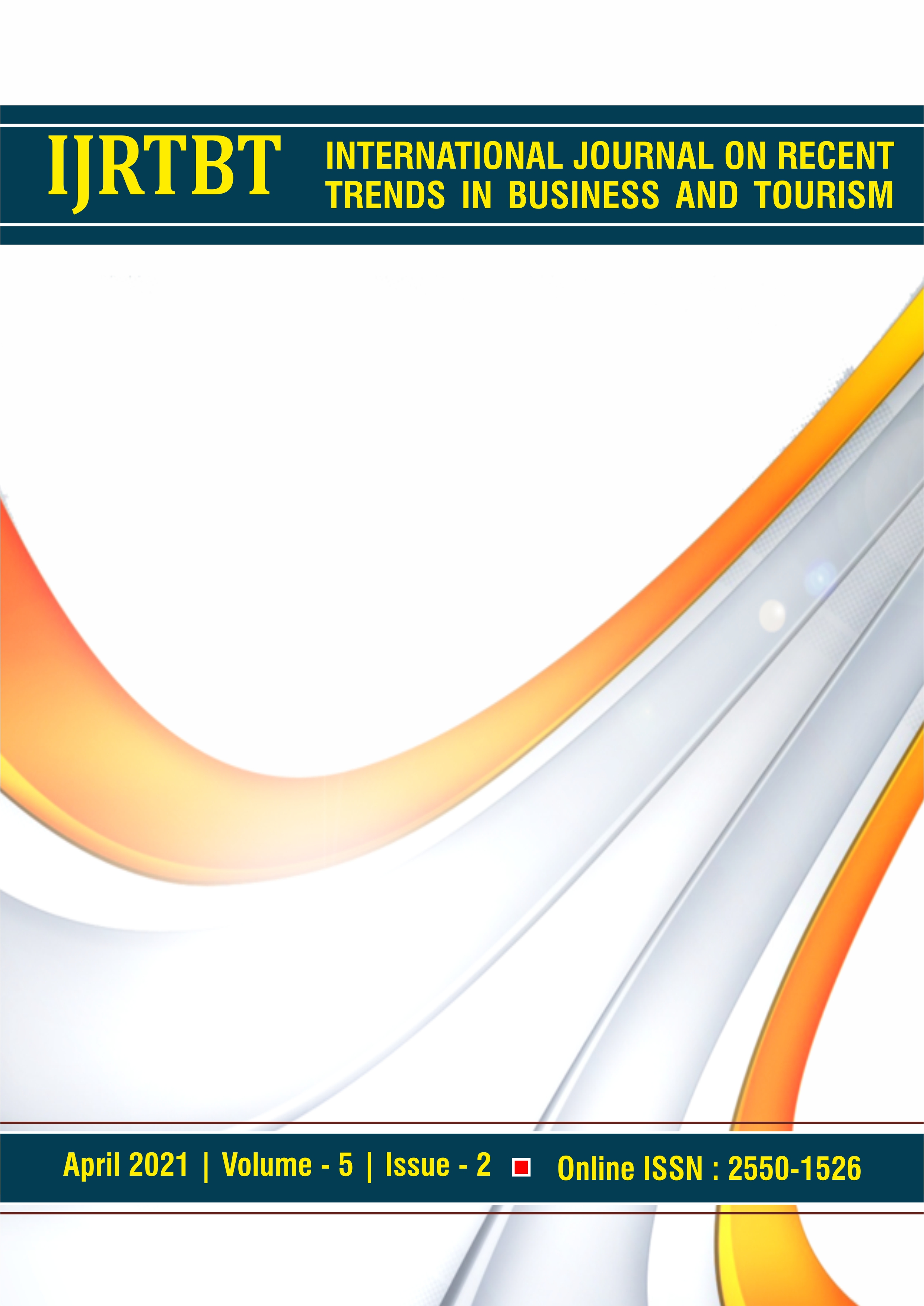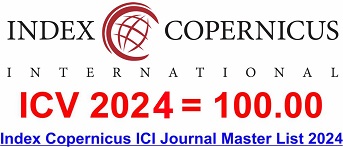LIFE-CYCLE STAGE THEORY: THE FUNDING PATTERN OF MICROFINANCE INSTITUTIONS
DOI:
https://doi.org/10.31674/ijrtbt.2021.v05i02.002Abstract
Microfinance is well-known as a development tool that provides financial services to the poor in improving their lives in a better way. The sustainability of the institutions is the key to robust economic growth of the country especially in developing countries in continuing the intention in alleviating the poor and improving living standards of the poor. By using life-cycle stage theory as a lens, this paper identifies the funding pattern of MFIs in each stage alongside their institutions’ life cycle. Based on longitudinal data of 10 years (2005-2015) of 2, 330 MFIs operating across 116 countries, this paper provides an insight into funding pattern of MFIs towards their sustainability, by using MFIs financial structure as the main characteristic in explaining the pattern. Findings reveal new MFIs are heavily dependent on soft loan from the government for initial capital for financial survival. When they grow in operation, young MFIs rely on borrowings and deposit as a source of fund, while mature MFIs are more inclined to use total assets and borrowings as their primary funding or long-term financial sustainability.
Keywords:
Funding Pattern, Financial Structure, Life-Cycle Stage Theory, SustainabilityDownloads
References
Abdulai, A. & Tewari, D.D. (2017). Trade-off between outreach and sustainability of microfinance institutions: evidence from sub-Saharan Africa. Enterprise Development and Microfinance, 28(3), pp 162-181.
Adhikary, S. & Papachristou, G. (2014). Is there a Trade-off between Financial Performance and Outreach in South Asian Microfinance Institutions? The Journal of Developing Areas, 48(4), pp 381-402.
Al-Azzam, M., Hill, R.C. & Sarangi, S. (2012). Repayment Performance in Group Lending: Evidence from Jordan. Journal of Development Economics, 97(2), pp 404-414.
Anduanbessa, T. (2009). Statistical Analysis of the Performance of Microfinance Institutions: The Ethiopian Case. Savings and Development, 33(2), pp 183-198.
Berenbach, S. & Churchill, C. (1997). Regulation and Supervision of Microfinance Institutions - Experiences from Latin America, Asia, and Africa. FinDevGateway, Accion International, January. Retrieved From: https://www.findevgateway.org/paper/1997/01/regulation-and- supervision-microfinance-institutions-experiences-latin-america-asia
Cull, R., Demirgu¨ç‐Kunt, A., & Morduch, J. (2007). Financial Performance and Outreach: A Global Analysis of Leading Microbanks. The Economic Journal, 117(517), pp 107-133.
Dawar, V. (2014). Agency Theory, Capital Structure and Firm Performance: Some Indian Evidence. Managerial Finance, 40(12), pp 1190-1206.
de Sousa-Shields, M. & Miamidian, E. (2004). Financing Microfinance Institutions: The Context for Transitions to Private Capital. Accelerated Microenterprise Advancement Project–USAID, MicroReport #8, December. Retrieved From: https://www.marketlinks.org/sites/marketlinks.org/files/resource/files/ML1776_mr8_financin g_microfinance_institutions_1_.pdf
Farrington, T., & Abrams, J. (2002). The Evolving Capital Structure of Microfinance Institutions. Micro-Enterprise Development Review, Inter-American Development Bank, December. Retrieved From: https://publications.iadb.org/publications/english/document/Microenterprise-Development- Review-Volume-5--No-2--December-2002.pdf
Fehr, D.W. & Hishigsuren, G. (2006). Raising Capital for Microfinance: Sources of Funding and Opportunities for Equity Financing. Journal of Developmental Entrepreneurship, 11(2), pp 133-143.
Hartarska, V. & Nadolnyak, D. (2007). Do regulated microfinance institutions achieve better sustainability and outreach? Cross-country evidence. Applied Economics, 39(10), pp 1207- 1222.
Hayes, A.F. & Cai, L. (2007). Using heteroskedasticity-consistent standard error estimators in OLS regression: An introduction and software implementation. Behaviour Research Methods, 39(4), 709-722.
Hermes, N., Lensink, R. & Meesters, A. (2011). Outreach and Efficiency of Microfinance Institutions. World Development, 39(6), pp 938-948.
Hollis, A., & Sweetman, A. (2007). The Role of Local Depositors in Controlling Expenses in Small-Scale Financial Intermediation: An Empirical Analysis. Economica, 74(296), pp 713– 735.
Hoque, M., Halloway, R. & Muhammad, C. (2011). Commercialization and Changes in Capital Structure in Microfinance Institutions. Managerial Finance, 37(5), pp 414-425.
Hudon, M. & Traca, D. (2011). On the Efficiency Effects of Subsidies in Microfinance: An Empirical Inquiry. World Development, 39(6), pp 966-973.
Jensen, M.C. & Meckling, W.H. (1976). Theory of the Firm: Managerial Behaviour, Agency Costs and Ownership Structure. Journal of Financial Economics, 3(4), pp 305-360.
Kyereboah-Coleman, A. (2007). The Impact of Capital Structure on the Performance of Microfinance Institutions. Journal of Risk Finance, 8(1), pp 56-71.
Ledgerwood, J. (1998). Microfinance Handbook: An Institutional and Financial Perspective. 2nd Edition. World Bank Publications, Washington D.C.
Luigi, P. & Sorin, V. (2009). A Review of Capital Structure Theories. Annals of Faculty of Economics, 3(1), pp 315-320.
Mersland, R. & Urgeghe, L. (2013) International Debt Financing and Performance of Microfinance Institutions. Strategic Change: Briefings in Entrepreneurial Finance, 22(1-2), pp 17-29.
Mersland, R. (2009). The Cost of Ownership in Microfinance Organizations. World Development, 37(2), pp 469-478.
Myers, S.C. (1984). The Capital Structure Puzzle. The Journal of Finance, 39(3), pp 575-592.
Nawaz, A., (2010). Performance of Microfinance: The Role of Subsidies. Savings and Development, 34(1), pp 97-138.
Pati, A.P. (2014). Indian MFIs: The Funding Structure and Its Determinants. The IUP Journal of Bank Management, 13(4), pp 63-84.
Rocca, M.L., Rocca, T.L. & Cariola, A. (2011). Capital Structure Decisions During a Firm’s Life Cycle. Small Business Economic, 37(1), pp 107-130.
Sapundzhieva, R. (2011). Funding Microfinance –a Focus on Debt Financing. Microbanking Bulletin, November. Retrieved From: https://www.themix.org/publications/microbanking- bulletin/2011/11/microfinancefunding-microfinance-debt-financing
Servin, R., Lensink, R. & van den Berg, M. (2012). Ownership and Technical Efficiency of Microfinance Institutions: Empirical Evidence from Latin America. Journal of Banking and Finance, 36(7), pp 2136-2144.
Vanroose, A. & D’Espallier, B. (2013). Do Microfinance Institutions Accomplish Their Mission? Evidence from the Relationship between Traditional Financial Sector Development and Microfinance Institutions’ Outreach and Performance. Applied Economics, 45(15), pp 1965-1982.
Zeller, M. & Meyers, R.L. (2002). The Triangle of Microfinance: Financial Sustainability, Outreach, and Impact. Johns Hopkins University Press, International Food Policy Research Institute (IFPRI), Baltimore.
Published
How to Cite
Issue
Section
License
Copyright (c) 2021 International Journal on Recent Trends in Business and Tourism (IJRTBT)

This work is licensed under a Creative Commons Attribution-NonCommercial-NoDerivatives 4.0 International License.



























